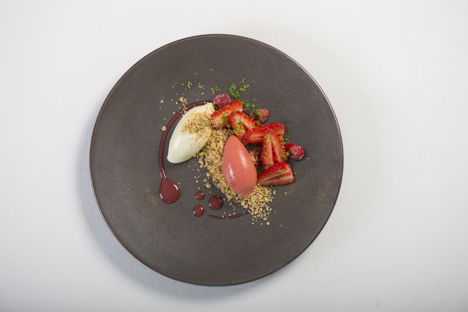
Sweet art: modern methods vs traditional techniques
Pastry chef Daniel Fletcher takes a look at how various pieces of kit can help create new textures and flavours in desserts and lists his must-have items.
View more from this series:
Sweet artDesserts have always given home cooks the chance to show off their presentation skills and serve something that’s designed to impress. They tend to be the most outspoken, memorable course of a meal, full of vivid colours, intense flavours and interesting combinations of taste and texture. Obviously the quality of ingredients, skill of the cook and they way a dessert is presented all have a profound effect on the finished dish, but what about the different cooking techniques – especially modern ones – required to pull off some of the top end sweets we see in Michelin-starred restaurants, and can they be recreated at home?
Daniel Fletcher has come across a fair number of gadgets during his time as a pastry chef. The one technique he’s seen flourish the most, however, is the use of liquid nitrogen to quickly and deeply freeze ingredients. ‘It sounds strange to say you’re freezing ingredients at -195.8°C but it’s great fun,’ he explains. ‘It means you can freeze desserts to order, such as mousse, ice cream or foam. Back when I used it the technique was quite advanced, but as with all technology it’s become commonplace – lots of professional kitchens have a canister of liquid nitrogen nowadays.’
While this is obviously out of reach for home cooks, there are a few things you might have lying around your house that can be used to make culinary tasks just that little bit easier. ‘I’ve seen household gadgets being used in the professional kitchen quite a bit,’ says Daniel. ‘Even a turntable to rotate cakes and plates steadily so they can be piped neatly, and chefs using drills to peel apples. I have seen a few crazy things in my time!’
Daniel might be able to play around with advanced equipment in the professional kitchen, but at home he keeps things basic as he prefers classical and simple desserts. ‘I don’t tend to have too much high tech kit at home,’ he says. ‘I don’t know how my wife would feel about storing a canister of liquid nitrogen in the garden! Saying that, I would love a Pacojet [a device that purées frozen ingredients until they’re incredibly smooth] to use at home but they’re a little too expensive.
‘Modern equipment tends to be more efficient and generally tends to cut down preparation time, be it a pressure cooker or a Kitchenaid,’ continues Daniel. ‘They’re not essential but I would say they’re something worth investing in. My top five pieces of kit for making desserts at home are a good set of scales, a decent stand mixer, a set of solid utensils, sharp knives and an ice cream scoop, which is a cheap but effective tool for presentation.’
Back in the professional kitchen, there are plenty of things to get excited about. While liquid nitrogen is no longer the incredible, science fiction-like technique it was several years ago, there are plenty of other ways to wow diners using modern technology. ‘Freeze-drying is quite popular at the moment, as are centrifuges which are used to distil flavours in liquids,’ says Daniel, ‘but neither of these processes are usually done in the actual kitchen. I think pastry chefs are always evolving their technique but it’s hard to say which ones will grow in popularity.’
One dish Daniel thinks encapsulates all the different techniques available to the pastry chef today can be seen above – a buttermilk panna cotta with lychee granita and a raspberry and rose infusion. ‘It looks relatively simple, but involves a few different techniques,’ he explains. ‘The panna cotta is a cooked and set cream, while the granita is frozen and blitzed in a Pacojet. To make the infusion, raspberries, sugar and fresh roses are cooked sous vide to draw all the juice from the fruit whilst infusing with the other flavours, before being left overnight to develop. For the garnish, whole raspberries are frozen in liquid nitrogen and then smashed into crumbs, while rose petals are dipped in egg white and sugar then dried out overnight to crystallise and add a different texture to the dish.’ It might be a bit adventurous for the average home cook, but it looks – and no doubt tastes – incredible.


